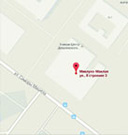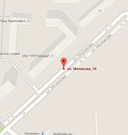| 1. What is an IP camera?
2. What is the difference between IP cameras and analog cameras?
3. Why is there a mass transition from analog to IP cameras?
4. What do an analog camera and an IP camera consist of?
Answer
1. What is an IP camera?
An IP camera is a surveillance camera, which has a built-in web server, a network interface (Ethernet or Wi-Fi) and can be directly connected to a LAN/WAN/Internet network. Most IP cameras offer motion detection, sending of e-mails, modem support, connection of external sensors, etc. To access an IP camera, software (usually comes with an IP camera) must be installed on the PC or users can access an IP camera via a standard browser. An IP camera can be configured to provide access to the video stream for all network users or only for authorized ones. 2. What is the difference between IP cameras and analog cameras?
The main difference between an IP camera and an analog camera is that an IP camera has a built-in encoder, which converts the image sensor signal into a digital stream. An analog camera transfers the image sensor signal directly to the camera’s output. 3. Why is there a mass transition from analog to IP cameras?
Nowadays, there is a tendency of transition to digital solutions in all spheres related to processing and transmission of information. Not long ago digital systems could not compete with analog systems because recording and transmission of information were in analog form (e.g. tape recorders, video recorders, exchange stations, telegraphs). However, due to technical progress in electronics, there is a continuous process of transition from analog to digital cameras.
Digital signal is easier for processing, saving and replaying. Besides, it is not subject to distortions when transmitting information (e.g. if re-recording a video tape many times, image quality will decrease and if re-recording a DVD, image quality will be the same as it always was because it does not depend on number of rerecording). That is why analog systems become a thing of the past and analog video recorders, exchange stations, cell phones, etc have not already been produced.
Nowadays, it is difficult to find video tapes on sale and more and more countries make the transition to digital television (the USA and Japan are to make it in 2010), so analog television goes out of date.
The situation is similar with security surveillance systems since most professionals choose IP-based surveillance systems over analog. 4. What do an analog camera and an IP camera consist of?
There are some similarities between IP and analog cameras but IP cameras have some distinctive features.
Camera comparison table
|
Feature
|
Analog camera
|
IP camera
|
|
Image sensor |
+ |
+ |
|
Lens |
+ |
+ |
|
Optical filter |
Optional |
Optional |
|
Signal processor |
Optional |
+ |
|
Video compression |
- |
+ |
|
Built-in microphone |
Optional |
Optional |
|
Audio output |
- |
Optional |
|
RAM |
- |
+ |
|
Flash memory |
- |
+ |
|
Network interface |
- |
+ |
|
Wireless interface |
- |
Optional |
|
Serial ports |
- |
Optional |
|
Alarm inputs/outputs |
- |
Optional |
|
Motion detection |
- |
+ |
|
Power supply |
+ |
+, allows supplying cameras
with power using the same cable
as for data communication
|
|
Housing |
When using outside |
When using outside |
Image sensor. IP cameras are equipped with the image sensor known as CCD or CMOS sensor, a semiconductor sensor that converts light into electrical signals.
Lens. A camera’s lens projects an image on the surface of an image sensor. It is one of the most important parts of a camera since the quality of an image is so dependent upon it.
Signal processor. A signal processor handles the signal from the camera’s image sensor, converts it into digital form and can improve camera image quality.
Microphone and audio output. An analog surveillance system does not allow transmitting sound unless a suitable cable is connected to the digital video recorder. There is no such problem with a network IP camera since it has an ability to detect sound by itself, synchronize it with video stream and send it for listening and/or recording over the same network. Some cameras support two-way audio that let the operators communicate with each other via intercommunication devices. Such devices are cheap and easy to install.
RAM (Random Access Memory) is used to store temporary files. Most IP cameras are equipped with a frame buffer. This is a part of RAM reserved for recording and temporary storage of video frames. The oldest frames are overwritten by the newest ones.
Flash memory stores camera’s settings, its firmware and other data that rarely needs to be updated.
Ethernet allows an IP camera to be connected to a 10/100 Mbps Ethernet network.
Wireless interface allows an IP camera to be connected to a Wi-Fi wireless network and makes surveillance possible where wired connection is impossible or complete portability is required.
Alarm inputs/outputs allow connecting alarm sensors to an IP camera. When a sensor triggers an alarm, the camera’s processor takes pre- and post-alarm images and can send them via e-mail or to FTP.
Each IP camera has its own unique IP address, a built-in processor and software, which allows it to function as a web server, an FTP server, an FTP client and e-mail client. Nowadays, most IP cameras offer such features as motion detection, alarm i/o and two-way audio. |



